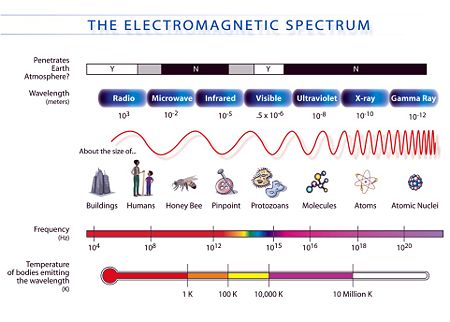
While light is universally accepted as the cause of visibility and a form of material energy, darkness is regarded by some as mere absence of light and not as a separate entity (modification of matter). In Jain view, tamah or darkness, which is the antithesis oflight and the cause of reduced visibility, is regarded as an entity separate from light. This view is fully supported by modern science. Light according to science, is a small portion of a large spectrum of electromagnetic radiations. Radiations with wave-lengths smaller or larger than visible spectrum are not receivable by our sense organ of sight and are, therefore, invisible or dark to us. For instance, infrared radiations, (or x-rays) can be 'perceived' by the eyes of special photographic plates and make photography possible even in the pitch darkness. Thus, darkness has a separate existence and both science and Jain views agree on this point.
Division of light into hot effulgence (atapa) and cold effulgence (udyota) is also more scientific than arbitrary. When heat is predominant in a radiation, it will be 'hot' and when a radiation is accompanied with little or no heat, it will be 'cold'. The terms atapa and udyota appropriately denote the nature of light. Radiations called prabha are emitted by certain types of jewels. They cause visibility and are, therefore, special forms of light.
The term ‚chaya’ stands for two phenomena of light: image and shadow. When light is obstructed by an opaque object, it throws a 'shadow', but reflection of light by a mirror produces an 'image'. [1] Jethalal S. Zaveri
Jethalal S. Zaveri
 Prof. Muni Mahendra Kumar
Prof. Muni Mahendra Kumar


